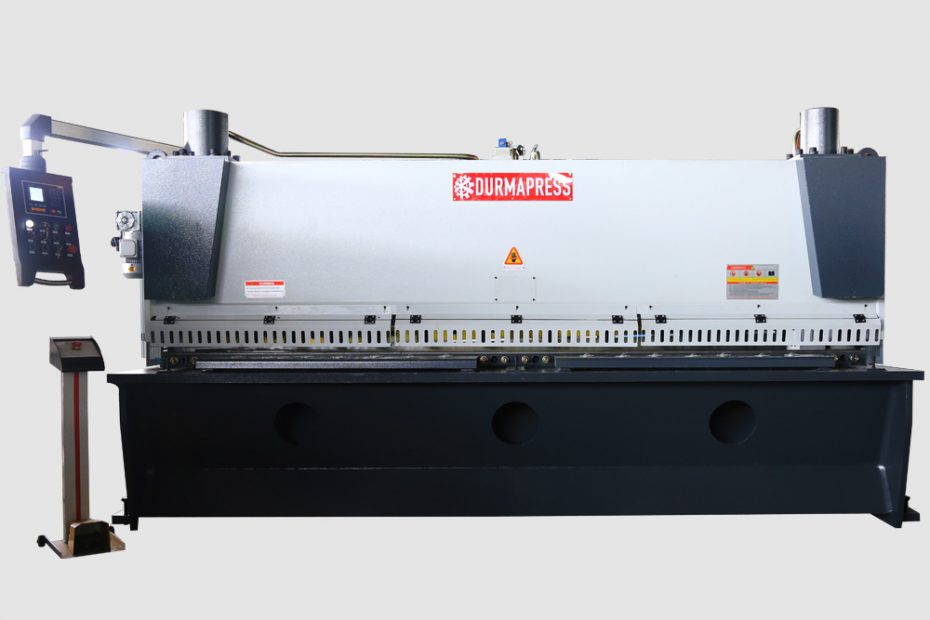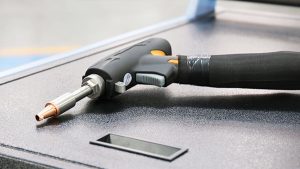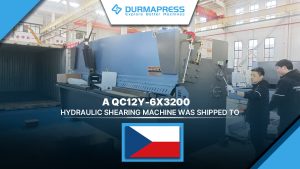-300x169.jpg)
The working principle of plate shearing machine involves converting circular motion into linear motion. It starts with the output of the main motor driving the flywheel, which then transmits the motion through a rigid clutch drive gear and a crankshaft (or eccentric gear). This movement is transmitted to the connecting rod, achieving linear movement of the slider. Mechanisms that convert circular motion into linear motion typically include ball- or pin-type mechanisms to facilitate the conversion of slider motion.
Plate shearing machines are used to plastically deform materials to give them the desired shape and precision. This process requires the use of a set of molds (upper and lower molds) to shape the material under pressure applied by a machine. When the material deforms, the body of the machine absorbs the reaction force.
One of the challenges during operation is the clearance noise generated by the operating mechanism. Friction occurs at three pairs of points: between the crankshaft journal and the crankshaft tile, between the crank neck and the connecting rod big head bearing bush, and between the connecting rod small head (ball head) and the slider ball head seat. To do. These friction points, along with manufacturing and assembly tolerances, create gaps between components. When these parts transition from free motion to contact motion, impact sounds are generated that are characterized by a wide frequency band with strong high-frequency components. The noise level increases as the gap between the components increases and the slider stroke time increases. Proper maintenance and adjustment of mechanical components can help reduce this noise.

Recent Posts
Categories
Follow Us
Contact us for more information
If you have any information about our products, please contact us and we will reply within 24 hours.


-300x169.jpg)
